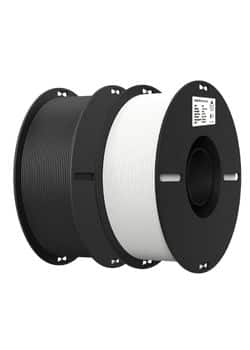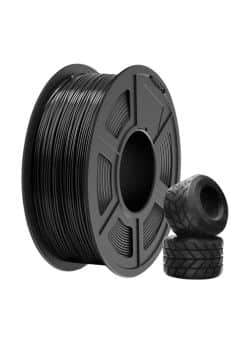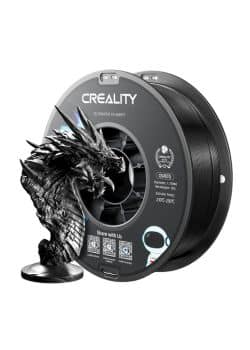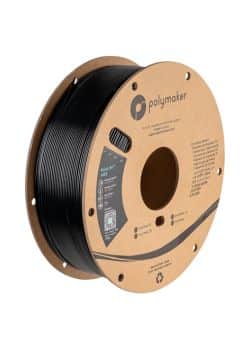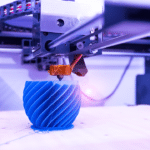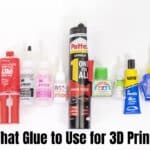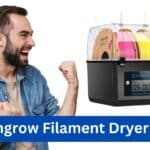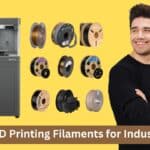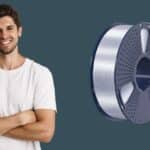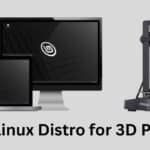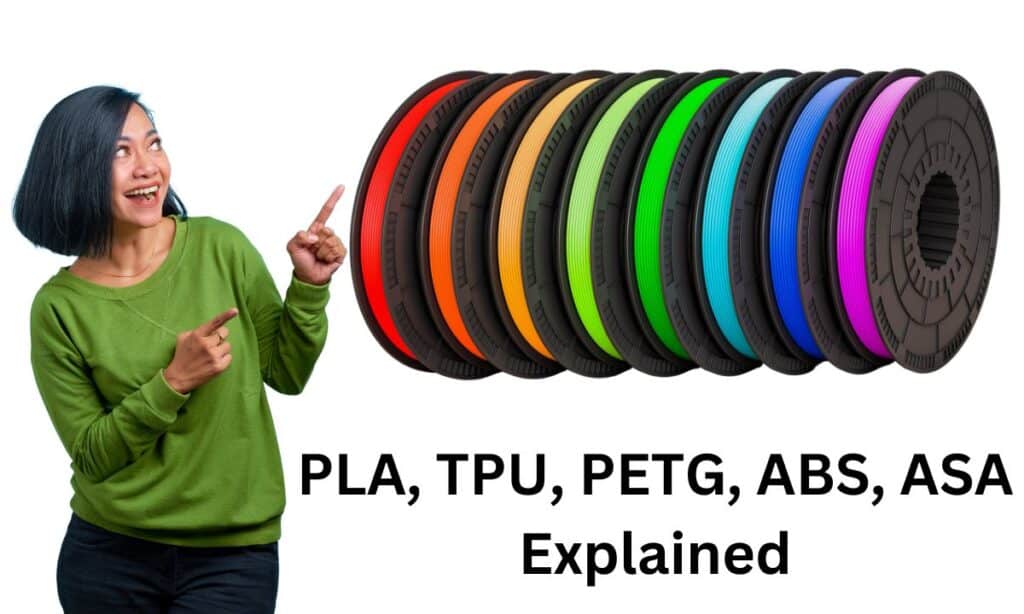
Choose PLA for decor, TPU for flexible parts, PETG for outdoor prints, ABS for high-temp strength, or ASA for ultimate outdoor durability—match filament to your project’s needs.
3D printing has transformed the way we create, design, and manufacture objects. Whether you’re a hobbyist, a DIY enthusiast, or a professional, selecting the right 3D printing filament is crucial for the success of your project. While PLA (Polylactic Acid) is the go-to choice for beginners, as you gain experience, you’ll want to explore more advanced materials like TPU, PETG, ABS, and ASA.
Affiliate Disclosure
We participate in Amazon affiliate programs, earning fees from qualifying purchases via links at no extra cost to you. It’s how we keep this blog rolling and my 3D printers buzzing with fresh filament for reviews like this one!
In this guide, we’ll dive into the top 5 filaments for 3D printing, their strengths, weaknesses, and the best use cases for each.
Related: 3D Printing Tips: The Ultimate Janky Yet Effective Beginner’s Guide
Why Filament Choice Matters in 3D Printing
The filament you choose determines the strength, durability, flexibility, and even the aesthetic appeal of your 3D-printed object. Each material has unique properties that make it suitable for specific applications. Understanding these properties will help you avoid common pitfalls and achieve better results.
Related: Exploring Best Filaments for 3D Printing Pens: A Guide to Various Filament Types
Top 5 Filaments for 3D Printing: A Detailed Comparison
1. PLA (Polylactic Acid): The Beginner’s Favorite
What is PLA?
PLA is the most popular filament for beginners, and for good reason. It’s easy to use, affordable, and works well for about 80% of the projects you’ll tackle as a novice. Made from renewable resources like cornstarch or sugarcane, PLA is also environmentally friendly, making it a favorite in the bioplastics market. In fact, in 2021, PLA was the most consumed bioplastic globally.
Key Characteristics
- Low Melting Point: PLA prints at around 190°C, making it compatible with most 3D printers.
- High Rigidity: PLA is one of the stiffest materials available, making it ideal for parts that require structural integrity.
- Low Impact Strength: While PLA is strong, it’s not the best choice for parts that need to withstand impact or flexing.
- Heat Sensitivity: PLA begins to deform at relatively low temperatures (around 45°C), so it’s not suitable for high-heat environments.
- UV Sensitivity: PLA doesn’t fare well under direct sunlight or UV exposure, which can cause it to degrade over time.
Best Uses for PLA
- Decorative Items: With its wide range of colors and finishes (matte, silk, rainbow, etc.), PLA is perfect for statues, toys, and other decorative pieces.
- Indoor Functional Parts: PLA works well for items like honeycomb walls, Gridfinity organizers, shelf brackets, and even trash bins, as long as they’re not exposed to high temperatures or constant stress.
2. TPU (Thermoplastic Polyurethane): The Flexible Option
What is TPU?
When you need flexibility in your prints, TPU is the filament of choice. TPU is a type of thermoplastic elastomer, meaning it combines the properties of rubber and plastic. It’s the most commonly used flexible filament in 3D printing due to its ease of use and versatility.
Key Characteristics
- Hardness Ratings: TPU comes in various hardness levels, typically measured on the Shore A scale. Higher numbers (e.g., 98A) indicate harder, easier-to-print materials, while lower numbers (e.g., 95A) are softer and more flexible.
- Printability: Softer TPU can be tricky to print, especially on Bowden-style extruders. Direct drive extruders are recommended for optimal results.
- Durability: TPU is highly resistant to wear, tear, and impact, making it ideal for parts that need to absorb shock or flex.
Best Uses for TPU
- Seals and Gaskets: TPU is perfect for creating airtight seals or gaskets.
- Impact-Absorbing Parts: Use TPU for door stoppers, table corner protectors, or any part that needs to absorb impact.
- Flexible Components: TPU is great for phone cases, watch straps, and other items that require flexibility.
3. PETG (Polyethylene Terephthalate Glycol): The Tough Middle Ground
What is PETG?
PETG is often seen as the next step up from PLA. It’s tougher, more durable, and offers better heat and UV resistance. However, it’s not without its drawbacks.
Key Characteristics
- Heat and UV Resistance: PETG performs better than PLA in high-temperature environments and under UV exposure.
- Strength and Flexibility: PETG strikes a balance between rigidity and flexibility, though it doesn’t excel in either category compared to other materials.
- Printability Issues: PETG is prone to sticking too well to print beds, causing damage to surfaces. It’s also hygroscopic, meaning it absorbs moisture from the air and must be dried before printing.
- Slow Melting: PETG melts slower than other materials, making it less suitable for high-speed printing.
Best Uses for PETG
- Outdoor Functional Parts: PETG is a good choice for items like planters, brackets, and fan ducts that need to withstand moderate heat and UV exposure.
- Translucent Prints: PETG is ideal for translucent or semi-transparent prints, as it doesn’t cloud up during printing like PLA.
4. ABS (Acrylonitrile Butadiene Styrene): The Industrial Workhorse
What is ABS?
ABS is one of the most widely used plastics in traditional manufacturing, found in everything from LEGO bricks to automotive parts. It’s known for its toughness, impact resistance, and stability under load.
Key Characteristics
- High Heat Resistance: ABS can withstand higher temperatures than PLA or PETG, making it suitable for functional parts in warm environments.
- Vapor Smoothing: ABS can be smoothed using acetone vapor, giving it a polished, professional finish.
- Warping and Fumes: ABS is prone to warping and emits strong fumes during printing, so it requires an enclosed printer with proper ventilation.
Best Uses for ABS
- Functional Parts Under Load: ABS is ideal for parts that need to endure sustained stress, such as brackets, spool holders, and electronics enclosures.
- High-Temperature Applications: Use ABS for parts exposed to heat, like printer components in enclosed chambers.
5. ASA (Acrylonitrile Styrene Acrylate): The Outdoor Champion
What is ASA?
ASA is often considered the upgraded version of ABS. It offers better UV resistance, environmental stability, and fewer fumes, making it a popular choice for outdoor applications.
Key Characteristics
- UV Resistance: ASA outperforms ABS and PETG in UV resistance, making it ideal for outdoor use.
- Lower Warping: ASA warps less than ABS and can sometimes be printed without an enclosure.
- Higher Cost: ASA is more expensive than ABS and less widely available.
Best Uses for ASA
- Outdoor Parts: ASA is perfect for items like garden fixtures, outdoor enclosures, and automotive parts.
- High-Durability Applications: Use ASA for parts that need to withstand environmental stress, heat, and chemical exposure.
Related: PLA vs ABS vs PETG: Choosing the Right Filament for Your 3D Prints
Conclusion: Choosing the Right Filament
Selecting the right filament depends on your project’s requirements. Here’s a quick summary to help you decide:
- PLA: Best for decorative items and indoor functional parts.
- TPU: Ideal for flexible, impact-resistant components.
- PETG: A good middle ground for outdoor and translucent prints.
- ABS: Perfect for high-temperature, load-bearing parts.
- ASA: The ultimate choice for outdoor and high-durability applications.
As 3D printing technology continues to evolve, so do the materials available. Whether you’re printing on an open-bed printer or an enclosed machine, there’s a filament out there to meet your needs. Happy printing!
Where to Buy 3D Printing Filaments: Top Trusted Websites
Finding high-quality filaments is essential for successful 3D printing. Here are some of the most trusted websites where you can purchase PLA, TPU, PETG, ABS, and ASA filaments:
1. MatterHackers
- Website: matterhackers.com
- Why Buy Here: Offers a wide range of filaments from top brands, including their own MH Build Series. Known for excellent customer service and fast shipping.
2. Amazon
- Website: amazon.com
- Why Buy Here: Convenient and fast shipping with a vast selection of filaments from various brands. Look for highly rated sellers like Overture, Hatchbox, and eSun.
3. Printed Solid (Acquired by MatterHackers)
- Website: printedsolid.com
- Why Buy Here: Specializes in high-quality filaments, including Jessie PLA and PETG, known for consistent performance and reliability.
4. Micro Center
- Website: microcenter.com
- Why Buy Here: Offers affordable in-house brands like Inland, which are great for beginners and hobbyists. Also has physical stores for in-person shopping.
5. Polymaker
- Website: polymaker.com
- Why Buy Here: Known for premium filaments like PolyTerra PLA and PolyLite ASA. Offers innovative materials and excellent quality control.
6. Prusa Research
- Website: prusa3d.com
- Why Buy Here: Offers high-quality Prusament filaments, known for precise tolerances and vibrant colors. Ideal for Prusa printer users.
7. FilamentOne
- Website: filamentone.com
- Why Buy Here: Specializes in eco-friendly and high-performance filaments. Offers unique materials like recycled PETG and carbon fiber blends.
8. NinjaTek
- Website: ninjatek.com
- Why Buy Here: The go-to source for flexible filaments like TPU. Known for their Cheetah, Armadillo, and NinjaFlex lines.
Frequently Asked Questions (FAQs)
What are the visual differences between PLA, TPU, PETG, ABS, and ASA?
PLA has a smooth, glossy finish with vibrant colors; TPU is flexible and often matte; PETG is semi-transparent and glossy; ABS is slightly textured and opaque; ASA is similar to ABS but with better UV resistance and a smoother finish.
Which filament is best for beginners?
PLA is the best filament for beginners due to its ease of use, low printing temperature, and wide availability.
Can I use PLA for outdoor projects?
No, PLA is not suitable for outdoor use as it degrades under UV exposure and deforms in high temperatures.
What’s the difference between ABS and ASA?
ASA offers better UV resistance and lower warping compared to ABS, making it ideal for outdoor applications.
Is TPU difficult to print?
TPU can be challenging to print, especially softer variants. A direct drive extruder is recommended for better results.
Which filament is the strongest?
PLA is the strongest in terms of rigidity, while ABS and ASA offer better impact resistance and durability.

